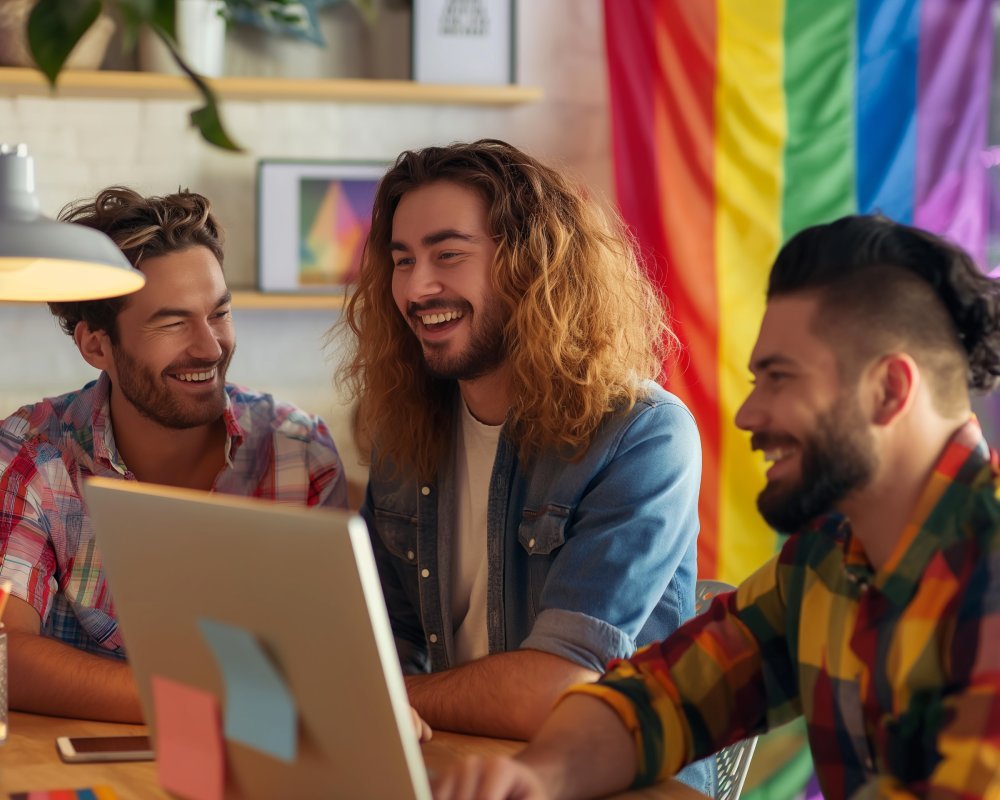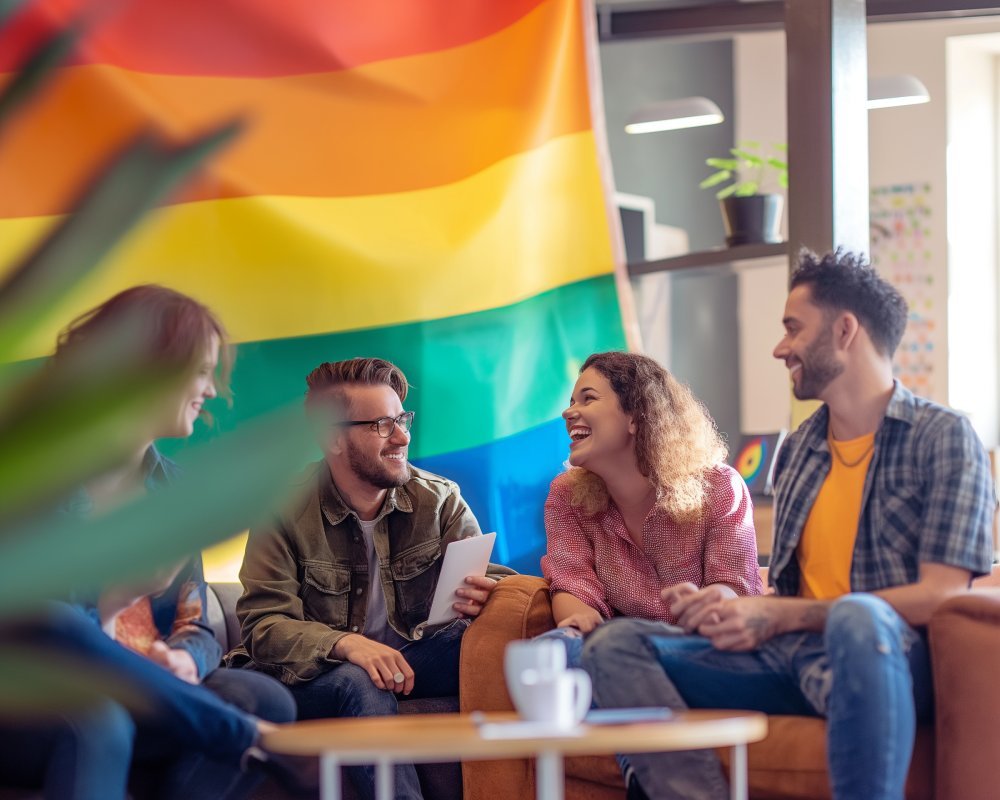
Exploring Gay Symbolism in Art and Culture – Art and culture have always been powerful tools for expression and representation, offering a platform for marginalized communities to voice their experiences and identities. For the LGBTQ+ community, art has played a significant role in exploring, celebrating, and reclaiming symbols that hold special meaning. “Exploring Gay Symbolism in Art and Culture” delves into the rich history and significance of these symbols within the LGBTQ+ community, shedding light on their importance and impact on individuals and society at large.
In recent years, there has been a growing recognition of the need for greater visibility and representation of LGBTQ+ individuals in art and culture. From visual arts to literature, music to film, LGBTQ+ artists have been using their work to challenge stereotypes, confront discrimination, and assert their identities proudly. The use of symbolism has been a common thread in many of these artistic expressions, serving as a means of communication and connection for the LGBTQ+ community.
The Power of Symbolism
Symbols have been used throughout history to convey meaning and evoke emotional responses. In the context of the LGBTQ+ community, symbols have served as powerful tools for representation, solidarity, and resistance. From the rainbow flag to the pink triangle, these symbols have become emblematic of the LGBTQ+ rights movement, signaling visibility and pride for individuals who identify as gay, lesbian, transgender, queer, bi, or any other non-heteronormative identity.
Symbols also play a significant role in communicating shared experiences and values within the LGBTQ+ community. For example, the use of the lambda symbol as a representation of queer identity dates back to the 1970s, when it was adopted by the Gay Activists Alliance as a symbol of liberation and unity. Similarly, the pink triangle, which was once used as a badge of shame and persecution during the Holocaust, has been reclaimed by LGBTQ+ individuals as a symbol of resilience and remembrance.
Visibility and Representation
One of the key benefits of using symbols in art and culture is the visibility and representation they provide for LGBTQ+ individuals. By incorporating symbols into their work, artists are able to create a sense of community and belonging for LGBTQ+ individuals, fostering a safe space for self-expression and identity exploration. Symbols like the rainbow flag have become synonymous with LGBTQ+ pride, serving as a powerful visual reminder of the diversity and resilience of the community.
In addition to providing visibility, symbols also play a crucial role in challenging societal norms and stereotypes surrounding LGBTQ+ identities. Artists use symbols to subvert expectations, disrupt heteronormative narratives, and push back against discrimination and marginalization. By reclaiming symbols that have been historically used to oppress or silence LGBTQ+ individuals, artists are able to assert their identities and challenge the status quo.

Art as Activism
Art has long been a powerful tool for activism, allowing individuals to express their political beliefs, social values, and personal experiences through creative means. For LGBTQ+ artists, art has been a means of resistance, protest, and advocacy, highlighting the struggles and triumphs of the community in the face of adversity. “Exploring Gay Symbolism in Art and Culture” showcases how art can be a catalyst for social change, inspiring individuals to question, challenge, and transform the world around them.
Through the use of symbols, LGBTQ+ artists are able to engage with audiences on a visceral and emotional level, sparking conversations and fostering understanding. Symbols like the transgender pride flag or the pink triangle serve as visual reminders of the struggles and triumphs of the LGBTQ+ community, inviting viewers to reflect on their own beliefs and biases. By incorporating symbols into their work, artists are able to create a sense of connection and solidarity with LGBTQ+ individuals, amplifying their voices and experiences in a powerful and poignant way.
The Evolution of LGBTQ+ Art
Over the years, LGBTQ+ art has evolved and expanded, encompassing a wide range of styles, genres, and mediums. From the provocative photography of Robert Mapplethorpe to the vibrant paintings of Keith Haring, LGBTQ+ artists have used their platform to challenge conventions, provoke thought, and inspire change. “Exploring Gay Symbolism in Art and Culture” celebrates the diversity and dynamism of LGBTQ+ art, highlighting its ability to educate, empower, and enlighten audiences around the world.
In addition to visual arts, LGBTQ+ symbolism can also be found in literature, music, theater, and performance art. Writers like Audre Lorde and James Baldwin have explored themes of queerness, race, and identity in their work, while musicians like Elton John and Frank Ocean have used their music to confront stereotypes and champion LGBTQ+ rights. LGBTQ+ symbolism is not limited to a single medium or genre, but rather permeates all aspects of art and culture, reflecting the complexity and richness of LGBTQ+ experiences.
Advertisement · Scroll to continue
Recommended
The Future of LGBTQ+ Art
As we look towards the future, it is clear that LGBTQ+ art will continue to play a vital role in shaping our understanding of identity, diversity, and inclusion. “Exploring Gay Symbolism in Art and Culture” calls attention to the ongoing importance of symbols in art and culture, highlighting their ability to unite, inspire, and transform. By embracing LGBTQ+ symbolism, artists are able to create a more inclusive and equitable world, where all individuals are seen, heard, and valued for who they are.
In conclusion, “Exploring Gay Symbolism in Art and Culture” showcases the power and potential of symbols to shape the narrative of LGBTQ+ identities. Through art and culture, LGBTQ+ individuals are able to reclaim their stories, challenge stereotypes, and assert their identities proudly. Symbols serve as a bridge between the individual and the collective, connecting LGBTQ+ individuals around the world in a shared language of pride and resilience. As we continue to explore the rich history and significance of LGBTQ+ symbolism in art and culture, we are reminded of the transformative power of creativity and expression in shaping a more inclusive and equitable society.
Advertisement · Scroll to continue

More Recommended
How to make LGBTQ people feel safe?
How to make LGBTQ people feel safe? – Creating a safe environment for LGBTQ individuals [...]
Paving the Way: The Impact of Lesbian-Owned Brands in the Advertising World
Paving the Way: The Impact of Lesbian-Owned Brands in the Advertising World Lesbian-owned brands have [...]
How Gay-Owned Brands are Shaping the Future of Inclusive Advertising
How Gay-Owned Brands are Shaping the Future of Inclusive Advertising In today’s world, the LGBTQ+ [...]
Why Diversity in Marketing Teams Leads to Better Campaigns
In today’s diverse and inclusive world, businesses must recognize the importance of having diverse marketing [...]
40 Funny Jokes About Gays
40 Funny Jokes About Gays – Humor brings joy, connects us, and helps us embrace [...]
What is EDI LGBTQ?
What is EDI LGBTQ? – The question “What is EDI LGBTQ?” encompasses the essence of [...]
Best 60 Lesbian Short Jokes: Flirty, Funny & Fabulous One-Liners 🌈
Best 60 Lesbian Short Jokes: Flirty, Funny & Fabulous One-Liners 🌈 – Laugh out loud [...]
What Is Gay History Month?
Blog Title: What Is Gay History Month? A Comprehensive Guide to LGBTQ+ History and Celebration [...]
How to Meet Other Gays in a New City
How to Meet Other Gays in a New City – Relocating to a new city [...]